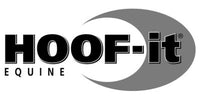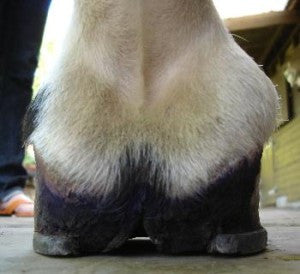Sidebone in Horses
The equine condition of sidebone is most significant as an indicator that your horse’s foot is receiving heavy and/or unbalanced forces. When sidebone is present there are chances that other changes to your horse’s feet, such as navicular disease or ringbone, maybe more likely to develop.
Sidebone may be suspected after palpation of the suspected area, but a radiographic examination is essential for conformation of this condition. The good news is that sidebone usually causes little or no lameness. It does however, decrease the natural shock absorption capacity of your horse’s hoof. Due to this, it is common to see problems such as navicular disease, narrow heels, and ringbone in horses diagnosed with sidebone. In rare cases, sidebone can be caused from a direct trauma.
When lameness is present, alternative shoeing to promote expansion of the quarters, circulation, and added shock absorption may be warranted. The root causes for sidebone are hoof concussion, repetitive motion injury, imbalances caused by conformation faults, and improper trimming/shoeing. It is most common in the forefeet of heavy horses working on hard surfaces. It is also frequent in hunters and jumpers, but rare in racing thoroughbreds. Improper shoeing which inhibits normal movement of the quarters is an important predisposing factor in the condition of sidebone. It is critical to note that anytime a horse is trimmed in a way that goes against his natural anatomy, you are making a trade off that will more than likely have a high price tag for both, you and your pony.
For example, horses that toe out, or toe in, will often naturally paddle their feet. If you ask your farrier to correct this and make your horse travel in a straight line, one side of the hoof wall will have to be lowered. This “correction” may make your horse appear to be moving normally (straight). But all it really does is change your horse’s normal conformation, and alter the movement which is natural for him. In doing so, problems such as sidebone, ringbone, and navicular disease may result.

